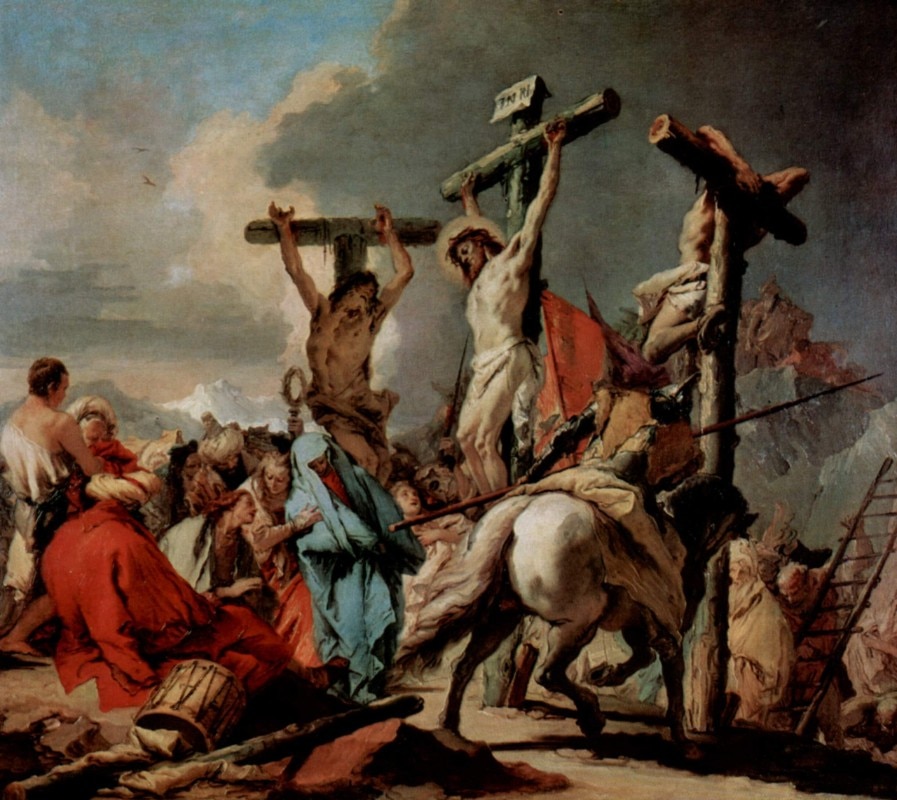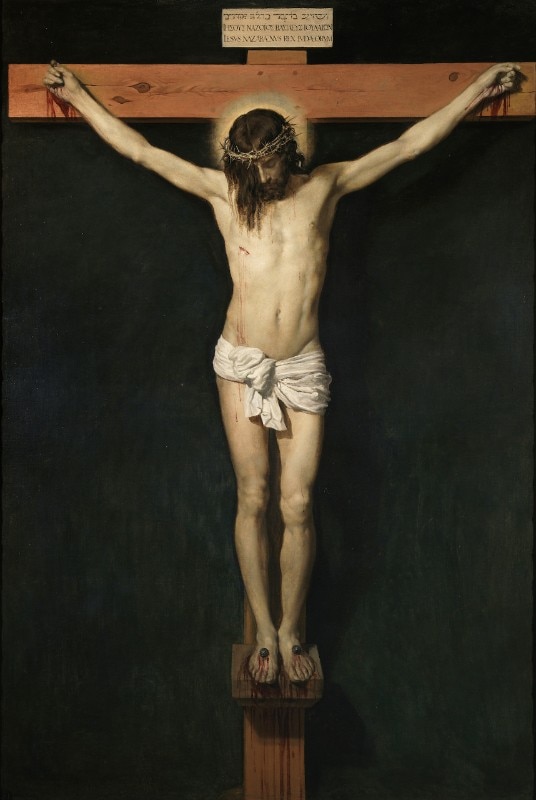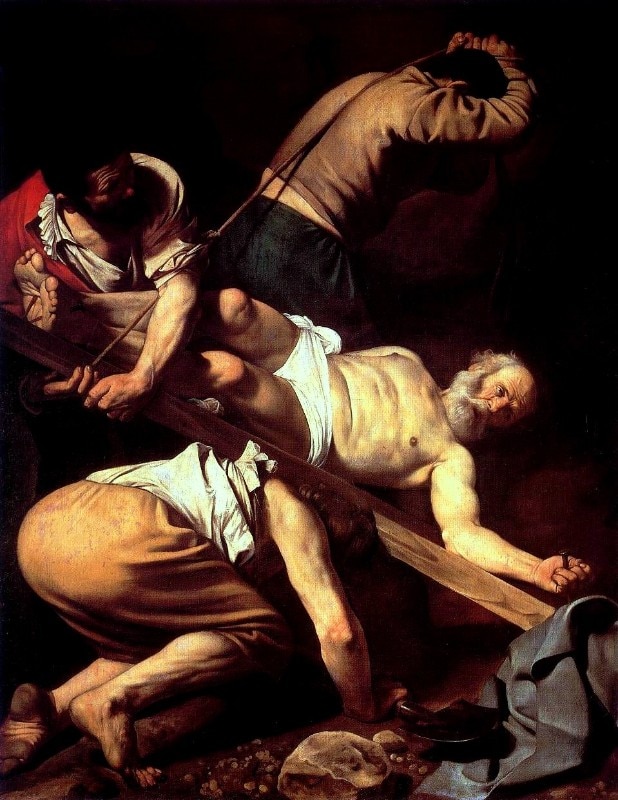In 71 BC, with the help of his legions, Marcus Licinius Crassus fought and defeated Spartacus and his army.
Many slaves died in the field, and over six thousand were taken prisoner. It is said that Crassus had them crucified along the Appian Way, between Capua and Rome.
In The Gospel According to Jesus Christ, José Saramago writes that when Jesus was 13 years old his father Joseph was involved in a Zealot revolt, was captured by Roman legionaries and then crucified with the other insurgents. In ancient Rome, crucifixion was a fairly ‘normal’ death reserved to slaves, traitors, rebels, and non-Romans captured in battle or during riots.
The crucified Christ is the emblem of the river of suffering and violent death that has always flooded the streets of our world.

Spanish painter Diego Velázquez, who was the leading artist in the court of King Philip IV, painted the figure of Christ Crucified in 1632. In this painting, Christ was human, not at all otherworldly, and resigned to a death that did not seem to foreshadow a resurrection. The work belongs to a series of paintings addressing religious themes that the artist created for the Church of the Benedictines of San Placido in Madrid after returning from his stay in Rome, where he saw for the first time Caravaggio’s paintings. The body of Christ respects classical schemes, but the details of the body and the position of the head do not follow the same style. Abandoned, with a mass of tangled locks on his head, Christ appears as an ordinary man, a traitor, a rebel with no history or future. Human and alone.
“If you are the king of the Jews, save yourself.” There was a written notice above him, which read: This is the king of the Jews. One of the criminals who hung there hurled insults at him: “Aren’t you the Messiah? Save yourself and us!” (Luke 23:37-39)
On the contrary, the work of Giovanni Battista Tiepolo, who decided to narrate the event through an agitated movement of the figures, appears majestic and lively. The artist paints the horses and horsemen in an impetuous manner, and the clouds that narrate the truth of an agitated scene are sketched in a quick and rapid way. Christ is the point where the lines of force created by the movements of the bodies converge. The son of God is portrayed as a demigod, and appears strong, muscular, almost imposing compared to his two companions on the cross, and is glorious and luminous, well aware of his resurrection.
According to the apocryphal book of the Acts of Peter, during the persecution ordered by Nero, Peter fled from Rome and while he was on the Appian Way, Christ appeared to him walking in the opposite direction: “Quo vadis, Domine?” Peter asked. “Eo Roma, iterum crucifiggi,” Jesus answered. According to the story, Peter was also crucified, but since he did not feel worthy of dying in the same way as the Master, he asked to be crucified upside down.

Caravaggio narrates the episode through a construction of lines characterised by shadows and light that reflect and build the bodies, thus filling the canvas entirely, while the figures recreate a second cross. Everything is balanced despite being disordered, and the three characters on the left give strength and movement to the painting through their actions. By the Lombard master’s choice, the three figures hide their faces, thus shifting the attention directly to the Saint who seems to participate in the physical fatigue of the others. Resigned and aware of his end, Peter waits for it with infinite sadness. His teary eyes, his contrite and tired face are just the beginning of a story that will lead him to death.
According to the Holy Scriptures, Jesus is risen, and that’s where the real difference with mankind lies. Not only has mankind not risen, but it still remains a prisoner of its logic of death – wars, pandemics, riots, torture.
It is as if humanity continues to live a perpetual Holy Week without ever reaching Easter.
Opening image: Caravaggio, Martyrdom of St. Peter, 1600


